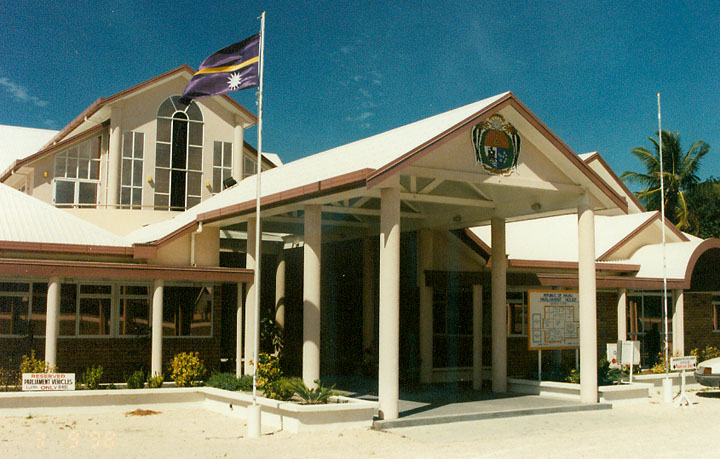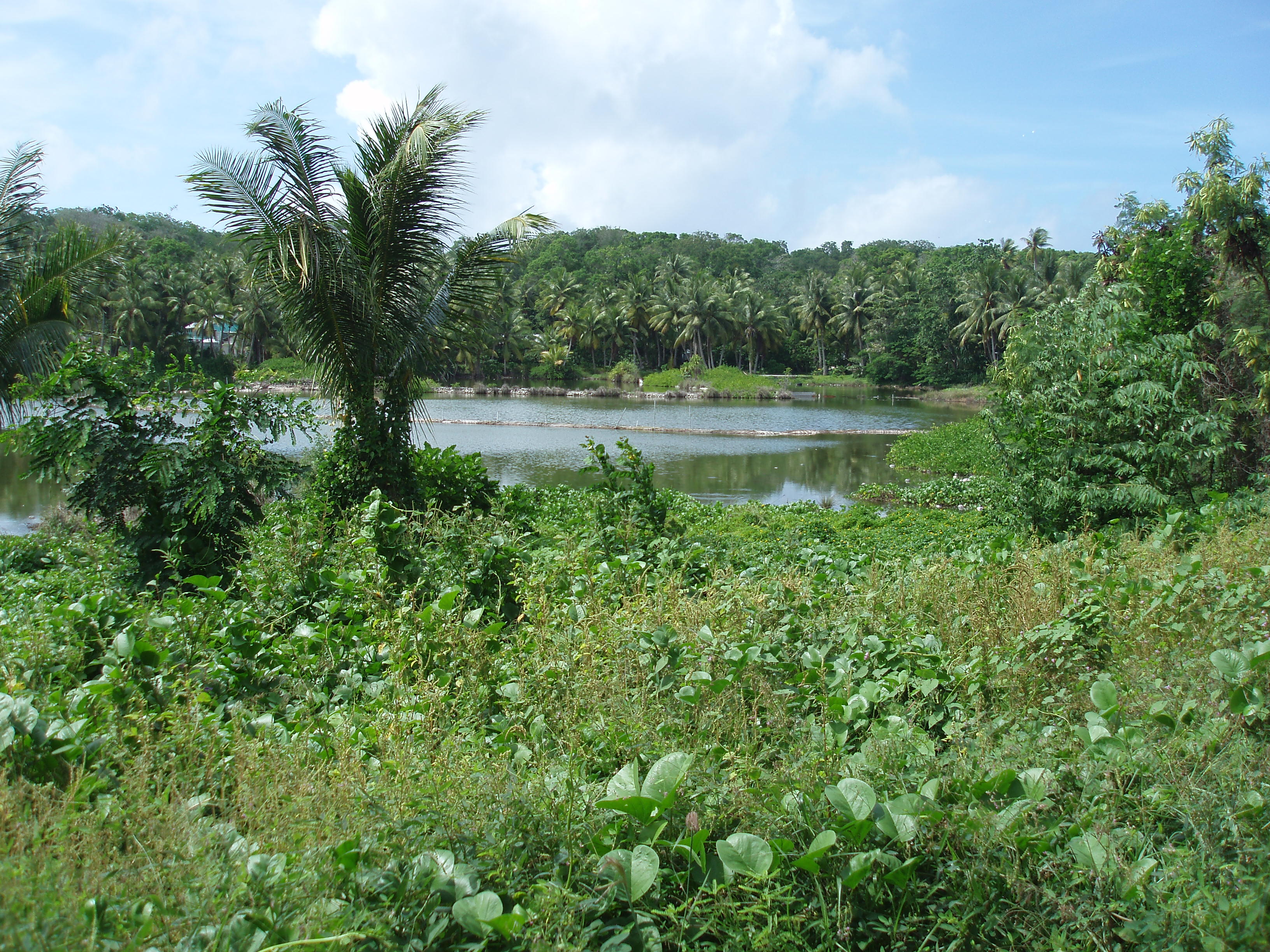|
History Of Nauru
The history of human activity in Nauru, an island country in the Pacific Ocean, began roughly 3,000 years ago when clans settled the island. Early history Nauru was settled by Micronesians around 3,000 years ago, and there is evidence of possible Polynesian influence.Nauru Department of Economic Development and Environment. 2003First National Report To the United Nations Convention to Combat Desertification (UNCCD)Retrieved 2006-05-03 Nauruans subsisted on coconut and pandanus fruit, and engaged in aquaculture by catching juvenile ''ibija'' fish, acclimated them to freshwater conditions, and raised them in Buada Lagoon, providing an additional reliable source of food. Traditionally only men were permitted to fish on the reef, and did so from canoes or by using trained man-of-war hawks. There were traditionally 12 clans or tribes on Nauru, which are represented in the 12-pointed star in the nation's flag. Nauruans traced their descent on the female side. The first Eu ... [...More Info...] [...Related Items...] OR: [Wikipedia] [Google] [Baidu] |
Nauruan Civil War
The Nauruan Civil War was fought from 1878 to 1888, between forces loyal to incumbent King Aweida of Nauru and those seeking to depose him in favour of a rival claimant. The war was preceded by the introduction of firearms to the island and its inhabitants, Nauruans, as a whole. For the majority of the war, the loyalists and the rebels found themselves in a stalemate, with one side controlling the northern and the other the southern part of the island. In 1888, the German Empire intervened by restoring Aweida to the throne and confiscating combatants' firearms; by the time they had finished, the German soldiers had confiscated 791 rifles from both belligerents, nearly one gun per every remaining living inhabitant of the island. By historical estimates, Nauru had a population of approximately 1,400 during the height of the war, while by the end of it there were some 900 native inhabitants left, i.e. over one third of island's population perished as a consequence of the conflict. ... [...More Info...] [...Related Items...] OR: [Wikipedia] [Google] [Baidu] |
Flag Of Nauru
Following the declaration of independence, independence of Nauru, the flag of Nauru ( na, anidenin Naoero) was raised for the first time. The flag, chosen in a local design competition, was adopted on independence day, 31 January 1968. The design symbolically depicts Nauru's geographical position, with a star just south of the Equator. Proportions and symbolism The flag reflects the geographical location of the island nation. The narrow gold stripe with a width of of the length of the flag represents the Equator. The stripe along with the star signifies the location of the island in the Pacific Ocean one degree south of the Equator. The separation of the blue flag cloth into two equal parts recalls the saga, that the first inhabitants were to have been brought to Earth from two boulders. Nauru itself is symbolised by a white 12-pointed star. The twelve points on the star represent the island's twelve original tribes. The following twelve tribes are: *Deiboe *Eamwidara *Eamw ... [...More Info...] [...Related Items...] OR: [Wikipedia] [Google] [Baidu] |
Buada Lagoon
Buada Lagoon is a landlocked, slightly brackish, freshwater lake of Buada District in the island nation of Nauru. It occupies about . The lagoon is classified as an endorheic lake, meaning there is no outflow to other bodies of water such as oceans or rivers. The Buada Lagoon is the biggest and only true lake in Nauru, a small independent republic in Oceania consisting of a flat island of 21.3 km² in area. The lake lies in Nauru's Buada district, from which it gets its name. It is not a lagoon as such, in that the lake is not joined to the sea, but its water is slightly brackish. Freshwater is rare in Nauru, being present only in the form of a small phreatic zone, the Moqua Well (a small underground lake) and the Buada Lagoon, which is the most visible, rivers and streams being utterly absent from the country. The lake has traditionally been used for pisciculture, which saw the raising of milkfish for human consumption through the centuries, and even though this pra ... [...More Info...] [...Related Items...] OR: [Wikipedia] [Google] [Baidu] |
William Harris (beachcomber)
William Harris (born in 1812 or 1813,McDANIEL, Carl N. & GOWDY, John M., ''Paradise for Sale: A Parable of Nature'', Berkeley: University of California Press, 2000, , pp. 32–35 presumed dead in 1889VIVIANI, Nancy, ''Nauru: Phosphate and Political Progress'', Honolulu: University of Hawaii Press, 1970, , p.13) was a British-born beachcomber who settled in pre-colonial Nauru and adopted a Nauruan lifestyle. A convict sentenced to the penal colony on Norfolk Island, he escaped and made his way to Nauru in 1842. There he "assimilated native culture ..,took a Nauruan wife, fathered several children, and was adopted as a Nauruan. He became perhaps the only beachcomber the Nauruans ever fully accepted and trusted." He acted as an intermediary between his people of adoption and passing European trade vessels. In 1881, Harris informed the Royal Navy that civil war had broken out on the island. In 1888, when Nauru became a German protectorate A protectorate, in the context of inter ... [...More Info...] [...Related Items...] OR: [Wikipedia] [Google] [Baidu] |
SMS Eber (1887)
SMS ''Eber'', a 735-ton iron-hulled gunboat, was built at Kiel, Germany for gunboat diplomacy in the Pacific. It was a barque-rigged auxiliary steamer. After commissioning in September 1887 she was sent to the Pacific to serve in the German colonial empire. She disarmed the inhabitants of Nauru in 1888, ending their civil war and annexing the island to the German Empire. ''Eber'' was anchored in Apia Harbor, Samoa, during the 1889 Apia cyclone The 1889 Apia cyclone was a tropical cyclone in the South Pacific Ocean, which swept across Apia, Samoa on March 15, 1889, during the Samoan crisis. The effect on shipping in the harbour was devastating, largely because of what has been described ... of 15–16 March 1889. Though she was the most modern of the seven warships present, damage to her propeller made it impossible for her to survive the violent wind and seas. After a long struggle, ''Eber'' was forced against the edge of the harbor reef and sank quickly, with the loss of 73 of h ... [...More Info...] [...Related Items...] OR: [Wikipedia] [Google] [Baidu] |
German New Guinea
German New Guinea (german: Deutsch-Neu-Guinea) consisted of the northeastern part of the island of New Guinea and several nearby island groups and was the first part of the German colonial empire. The mainland part of the territory, called , became a German protectorate in 1884. Other island groups were added subsequently. The Bismarck Archipelago (New Britain, New Ireland and several smaller islands), and the North Solomon Islands were declared a German protectorate in 1885; in the same year the Marshall Islands were bought from Spain for $4.5 million by the Hispano-German Protocol of Rome; Nauru was annexed to the Marshall Islands protectorate in 1888, and finally the Caroline Islands, Palau, and the Mariana Islands (except for Guam) were bought from Spain in 1899. German Samoa, though part of the German colonial empire, was not part of German New Guinea. Following the outbreak of the First World War in 1914, Kaiser-Wilhelmsland and nearby islands fell to Australian for ... [...More Info...] [...Related Items...] OR: [Wikipedia] [Google] [Baidu] |
Anglo-German Declarations About The Western Pacific Ocean
In 1886, the British Empire and the German Empire made two declarations about their spheres of interest in the Western Pacific Ocean. Their complete names are: *Declaration between the Governments of Great Britain and the German Empire relating to the Demarcation of the British and German Spheres of Influence in the Western Pacific; April 6, 1886 *Declaration between the Governments of Great Britain and the German Empire relating to the Reciprocal Freedom of Trade and Commerce in the British and German Possessions and Protectorates in the Western Pacific; April 10, 1886 Great Britain and Germany agreed in 1885 to negotiate a common declaration about their spheres of interest in the western Pacific. Previously, German plans of an annexation of New Guinea, outlined in a German newspaper, and the rapid development of both German and French trade led to unrest among Australian politicians.Fabricius 1992 (see External links), p. 167 Both powers wanted to protect the interests of their p ... [...More Info...] [...Related Items...] OR: [Wikipedia] [Google] [Baidu] |
Nauru Annexation Germany 1888
Nauru ( or ; na, Naoero), officially the Republic of Nauru ( na, Repubrikin Naoero) and formerly known as Pleasant Island, is an island country and microstate in Oceania, in the Central Pacific. Its nearest neighbour is Banaba Island in Kiribati, about to the east. It further lies northwest of Tuvalu, northeast of Solomon Islands, east-northeast of Papua New Guinea, southeast of the Federated States of Micronesia and south of the Marshall Islands. With only a area, Nauru is the third-smallest country in the world behind Vatican City and Monaco, making it the smallest republic as well as the smallest island nation. Its population of about 10,000 is the world's second-smallest (not including colonies or overseas territories), after Vatican City. Settled by people from Micronesia circa 1000 BCE, Nauru was annexed and claimed as a colony by the German Empire in the late 19th century. After World War I, Nauru became a League of Nations mandate administered by Australia ... [...More Info...] [...Related Items...] OR: [Wikipedia] [Google] [Baidu] |
Warrior Suit, Nauru, 1891 - Staatlichen Museums Für Völkerkunde München - DSC08287
A warrior is a person specializing in combat or warfare, especially within the context of a tribal or clan-based warrior culture society that recognizes a separate warrior aristocracies, class, or caste. History Warriors seem to have been present in the earliest pre-state societies. Scholars have argued that horse-riding Yamnaya warriors from the Pontic–Caspian steppe played a key role during the Indo-European migrations and the diffusion of Indo-European languages across Eurasia. Most of the basic weapons used by warriors appeared before the rise of most hierarchical systems. Bows and arrows, clubs, spears, swords, and other edged weapons were in widespread use. However, with the new findings of metallurgy, the aforementioned weapons had grown in effectiveness. When the first hierarchical systems evolved 5000 years ago, the gap between the rulers and the ruled had increased. Making war to extend the outreach of their territories, rulers often forced men from lower orders o ... [...More Info...] [...Related Items...] OR: [Wikipedia] [Google] [Baidu] |
.jpg)


